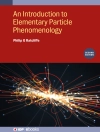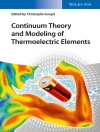Written by leading experts in the field, the first edition of this textbook was the first of its kind to address numerous potential applications such as the technology of high-voltage insulation in pulsed inhomogeneous fields, and applications related to cavitation development in liquid dielectrics, treatment of different materials and plasma medicine.
This second edition addresses the development of the theory over the past few years and features extensive revisions, as well ...
Tabela de Conteúdo
Preface to 2nd edition Preface Acknowledgement Author biographies Nomenclature Chapter 1. Introductory description of processes related to the negative pressure...
Sobre o autor
Mikhail Shneider is a senior scientist in the Applied Physics Group at the Mechanical and Aerospace Engineering Department, Princeton University. His research interest...












